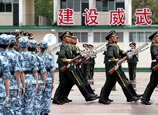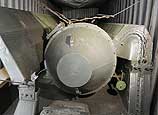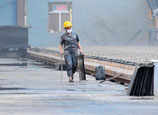
Following hard on the heels of the establishment of a free trade zone, the State Council, also known as the cabinet, has handed Shanghai another major mission - pioneering the nation's economic restructuring.
By granting national status to the development plan of the Shanghai Zhangjiang High-tech Industrial Development Zone between 2013 and 2020, Shanghai is now expected to take the lead and set an example for industrial innovation.
Hou Jin, deputy director of the management committee of the zone, reiterated the importance of the mission, saying the Shanghai government is committed to achieving the specific targets set in the plan approved by the State Council on June 2.
By 2015, the total sales revenue of the companies in Zhangjiang is expected to reach 3.3 trillion yuan ($535 billion), of which 1.2 trillion yuan should be contributed by strategic emerging industries.
By 2020, the total sales revenue of the companies in Zhangjiang is expected to amount to 6 trillion yuan, with the contribution of strategic emerging industries rising to 2 trillion yuan. The export value of high-tech enterprises is expected to take up 12 percent of the total sales revenue. Research and development should take up 6 percent of the entire sales revenue.
An innovative industrial system is expected to be completed in the zone, pillared by information technology, high-end equipment manufacturing, biomedicine, energy-saving and environmental protection products as well as new material industries. New energy and new-energy automobiles industries will take a pioneering role in the zone. Meanwhile, traditional industries will be reformed and updated there, according to Hou.
Total sales revenue made by the companies based in the Zhangjiang High-tech Industrial Development Zone reached 1.88 trillion yuan in 2012, with an added-value of 330 billion yuan. By the end of last year, the zone had attracted 1,030 research and development institutions - both Chinese and foreign - and 300 Fortune Global 500 companies to set up operations there. All these, according to Hou, have helped "to lay a solid base for Zhangjiang to grow into a first-rate industrial park worldwide".
Ever since the State Council granted the development of Zhangjiang national significance in 2011, the administrative area of the zone has expanded from an initial 63 square kilometers to the current 470 sq km. It is home to about 80 percent of Shanghai's knowledge-intensive companies.
"Zhangjiang is responsible for about half of Shanghai's economic development area. It is sure to become the main battlefield for economic restructuring, industrial technology innovation and the development of strategic emerging industries. The State Council's approval will help to build Zhangjiang into a better known brand name," said Ma Jing, chief engineer of the Shanghai Municipal Commission of Economy and Informatization.
Shanghai has already done more than what's stipulated in the plan. It has established numerous design and innovation centers around the city, including Shangnhai Redtown, 1933 Creative Park and Bridge 8, to name just a few.
Wang Yang, product designer and owner of the design company Kieferzapfzen Design, agreed that great changes have taken place in the manufacturing industry since 2008 in Shanghai.
"It was the world crisis that crippled the domestic export-oriented companies and intensified competition in the global market. They started to move up the value-added chain by building up their own brands or attaching more importance to innovation. This seems to be a trend both inevitable and incontrovertible," she said.
Economic restructuring driven by innovation is one of the key targets for the municipal government of Shanghai during the 12th Five-Year Plan period (2011-15). Shanghai Party chief Han Zheng said in a government conference held early last year that economic restructuring driven by innovation is the path that Shanghai must take to seek sound development.
















 2nd cross-sea bridge spanning across Hangzhou Bay to open
2nd cross-sea bridge spanning across Hangzhou Bay to open


![]()
